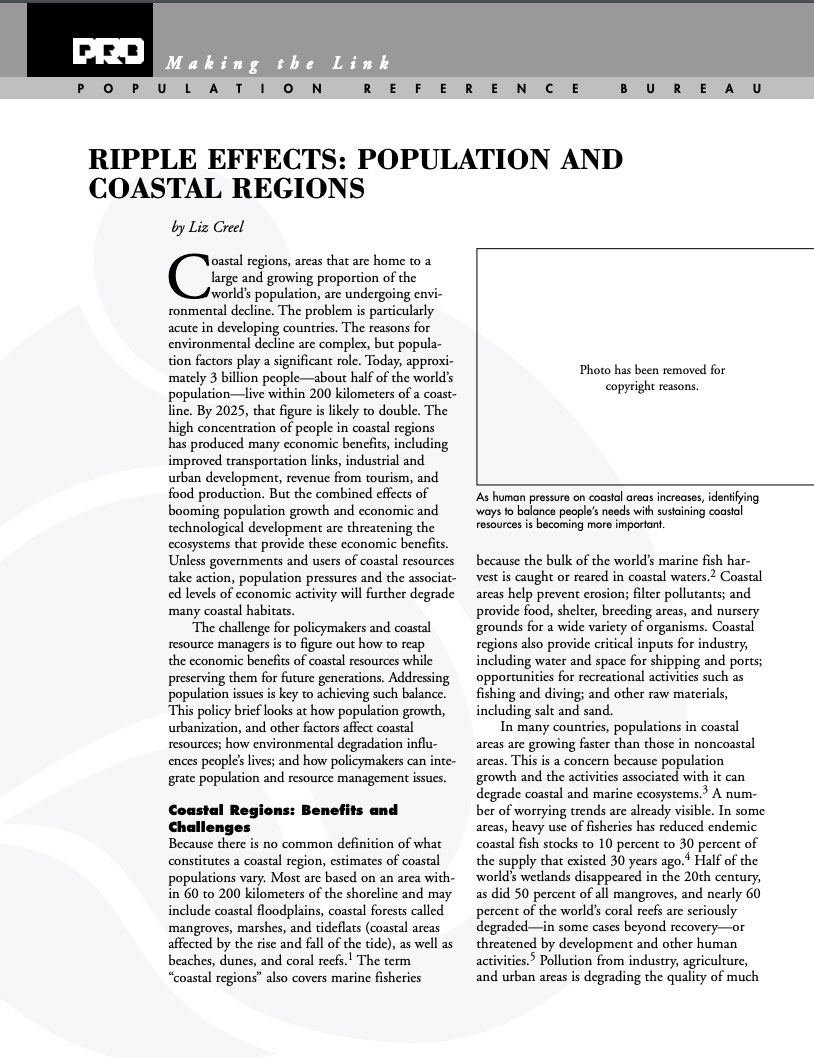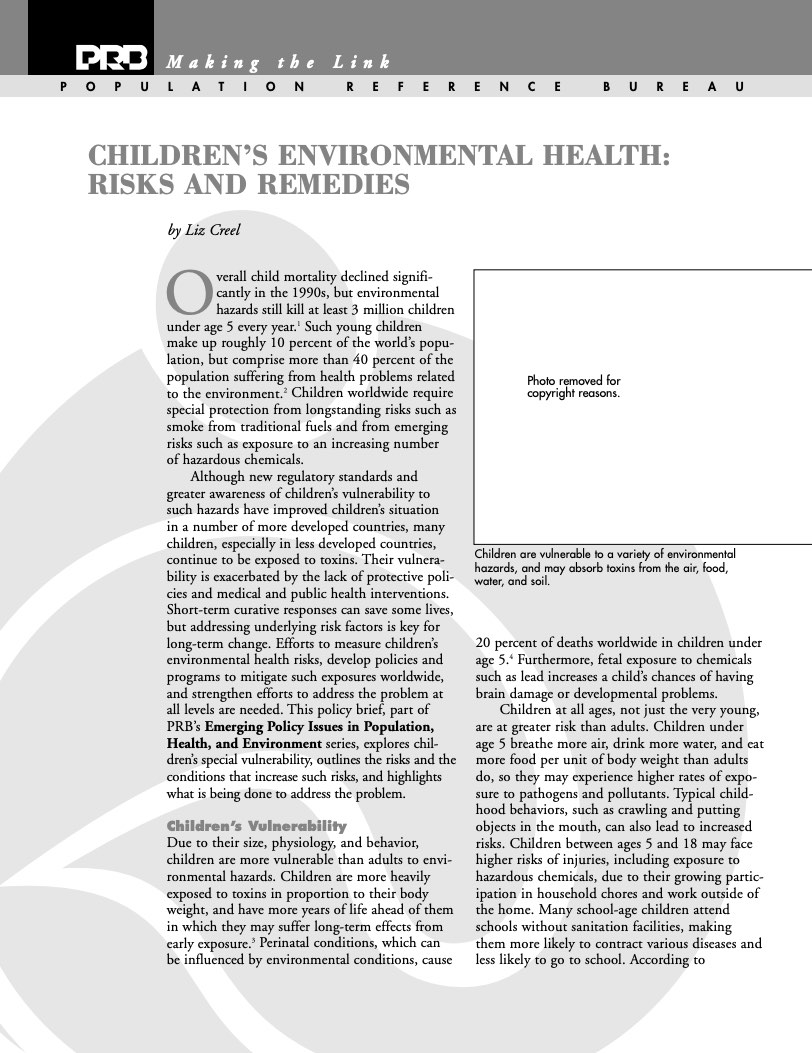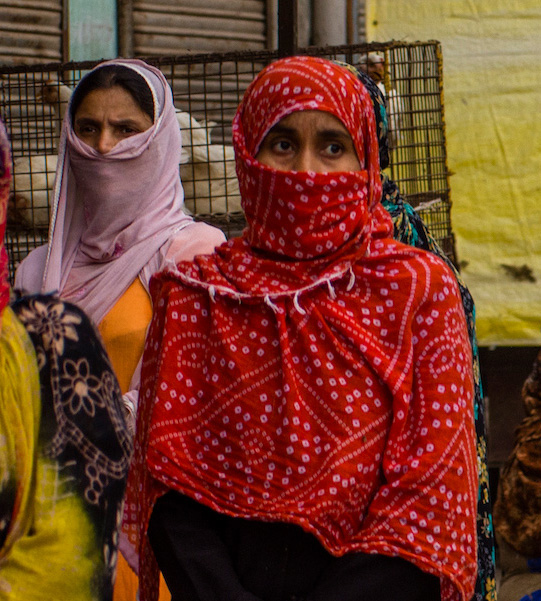Ripple Effects: Population and Coastal Regions
(2003) Coastal regions, areas that are home to a large and growing proportion of the world's population, are undergoing environmental decline.

(2003) Coastal regions, areas that are home to a large and growing proportion of the world's population, are undergoing environmental decline.

(2003) Coastal regions, areas that are home to a large and growing proportion of the world's population, are undergoing environmental decline.

(2002) Overall child mortality declined significantly in the 1990s, but environmental hazards still kill at least 3 million children under age 5 every year.1 Such young children make up roughly 10 percent of the world's population, but comprise more than 40 percent of the population suffering from health problems related to the environment.2

The first nation in the world to take a regular population census, the United States has been counting its population every 10 years since 1790—as required by the U.S. Constitution (Article I, Section 2).
(2003) The United States adopts more children from abroad than any other country. The number of foreign children adopted by U.S. parents has increased sharply, and nearly doubled during the 1990s.

Project: PACE: Policy, Advocacy, and Communication Enhanced for Population and Reproductive Health
Holistic integrated solutions are key to address the interlinkages of the gendered impacts of crises.

(2020) The world is better equipped to fight a pandemic today than it was in 1918, when influenza swept the globe and infected up to one-third of the world’s population.1 While science and medical advances have given us new advantages in fighting disease, some demographic trends since 1918 may increase the risk for spreading contagions and our vulnerability to viruses.
(2008) Hardly a day has gone by over the past few months without a national poll tracking how this year's U.S. presidential race is going. However, the U.S. presidential election actually is a series of 51 contests (50 states and the District of Columbia).